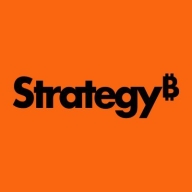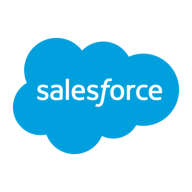


Find out what your peers are saying about Salesforce, Qlik, MicroStrategy and others in Embedded BI.
The biggest return on investment is the time saving for the customer.
This saves a significant amount of time, particularly for reports that would have needed around fifty people.
The ROI of using Tableau extends to its seamless integration across various platforms, as it's from Salesforce and thus not limited to any specific cloud provider.
Tableau is saving me time, money, and resources, which I would rate as ten.
I would rate the technical support from MicroStrategy as nine out of 10.
I would rate the customer support a solid 10.
They provide quick email and phone responses and have Thai-speaking personnel.
There should be consistent standards for all users.
The technical support for Tableau is quite good.
MicroStrategy's scalability is good, as it has the possibility to read a lot of data and works fine with all the information that we have.
Tableau is easy to use across various dimensions, whether on-premises or on the cloud.
The solution is fully scalable and performs well even with large datasets, provided there is proper supporting hardware.
Tableau is easy to scale.
I would rate the stability of MicroStrategy as nine out of 10.
The application hangs after continuous use due to the buildup of cache.
I rate the stability a five or six because Tableau updates very often with new versions or patches.
Organizations that are well-established and have more money can afford MicroStrategy, but startups and mid-level organizations who do not have this much budget have to opt for other cheaper tools.
MicroStrategy could learn from Power BI's user-friendly interface.
I would appreciate improvements in MicroStrategy related to integration or sharing features with Power BI.
In QlikView, I believe the improvement that should be made is to bring the costs down, as you'll have to be competitive with Power BI, aiming for at least a 30% reduction to stop the hemorrhaging to Power BI.
We cannot send the entire Excel file reports via email within Tableau.
The product owner should enhance its benefits or clarify its role.
It sometimes requires extensive investigation to determine why the data does not appear correctly.
The license cost per user or per year for QlikView is about 500 Euros annually.
Power BI as a much cheaper alternative.
A license for 150 users costs around $17,000 USD per year.
Looker is known to be quite expensive.
It's important because with MicroStrategy we can manage all our cubes and show data to our clients.
The MicroStrategy interface is not as good as Power BI, especially concerning the user-friendly aspects.
The most effective features of MicroStrategy for data analysis in my experience are the security, the metadata management, and the administration, along with the options of different workarounds available to accommodate different types of requirements.
The best features in QlikView are rapid development, the fact that I can do what I want in QlikView, and full control along with ease of use.
A significant feature for me is the real-time connection to data sources because it effectively manages large data sets.
Tableau serves as a stable dashboarding tool for higher management, aiding in quick decision-making.
Building hyper extracts and visualization capabilities make Tableau a robust tool for data analysis.
| Product | Market Share (%) |
|---|---|
| Tableau Enterprise | 23.9% |
| MicroStrategy | 10.4% |
| QlikView | 10.9% |
| Other | 54.800000000000004% |



| Company Size | Count |
|---|---|
| Small Business | 37 |
| Midsize Enterprise | 26 |
| Large Enterprise | 100 |
| Company Size | Count |
|---|---|
| Small Business | 73 |
| Midsize Enterprise | 36 |
| Large Enterprise | 75 |
| Company Size | Count |
|---|---|
| Small Business | 117 |
| Midsize Enterprise | 66 |
| Large Enterprise | 183 |
Company: Founded in 1989, MicroStrategy (Nasdaq: MSTR) is a leading worldwide provider of enterprise software platforms. With direct operations in 26 countries worldwide and approximately 2,000 employees, our mission is to provide enterprise analytics, mobility, and security platforms that are flexible, powerful, scalable and user-friendly. To learn more, visit MicroStrategy online, and follow us on Facebook and Twitter.
Product portfoilio:
MicroStrategy 10 Secure Enterprise™ empowers leading organizations to analyze vast amounts of data and distribute actionable business insight throughout an enterprise through two distinct offerings: MicroStrategy Analytics™ and MicroStrategy Desktop™. MicroStrategy Analytics delivers reports and dashboards, and enables users to conduct ad hoc analysis and share insights anywhere, anytime, via mobile devices or the Web. It also combines the agility and productivity of self-service visual data discovery with the security, scalability, and governance features of enterprise-grade business intelligence. MicroStrategy Desktop is a standalone, on-premise visual data discovery tool designed to enable business users to analyze and understand their data. MicroStrategy Mobile™ enables organizations to rapidly build custom business applications that deliver analytics combined with transactions, multimedia, and custom workflows to mobile devices. MicroStrategy Secure Cloud™ combines all of the enterprise analytics, mobile, and security features in MicroStrategy 10 Secure Enterprise with powerful and scalable data integration, validation, and warehousing services — all delivered in an environment where organizations can deploy transformational analytics applications in minutes.
Usher, MicroStrategy’s breakthrough security solution, is a powerful mobile security platform designed to dematerialize traditional forms of identity verification (such as passwords, tokens, and physical badges) and replace them with a single mobile identity badge that is cryptographically linked to its owner’s smartphone and dynamically linked to an enterprise’s existing identity repositories. Usher works on standard Android and iOS smartphones, and also boasts an Apple Watch™ integration.
QlikView is a Business Intelligence tool that allows you to keep tabs on all of your business-related information in a clean, clear, and easy to access database that is intuitive to build and simple to navigate. It is ideal for business owners who wish to improve overall output by creating the most productive system possible.
Tableau Enterprise offers powerful features for creating interactive visualizations, dashboards, and maps, including drag-and-drop functionality and easy integration with multiple data sources, promoting real-time collaboration and self-service analysis.
Tableau Enterprise stands out with its ability to create user-friendly, interactive visualizations, making it pivotal for business intelligence applications. Users benefit from its seamless connectivity and advanced analytical functions, facilitating data blending and storytelling. Despite a complex learning curve and high licensing costs, its features like geospatial analysis and efficient content distribution drive its indispensable value for data-driven insights. Enhancements in predictive analytics and support integration with machine learning tools further its capabilities across industries.
What are the most valuable features?Tableau Enterprise is widely used for business intelligence, supporting industries like healthcare, telecommunications, and finance. Organizations utilize it to analyze performance indicators, operational insights, and financial analytics, enhancing decision-making through interactive reports and real-time data integration.